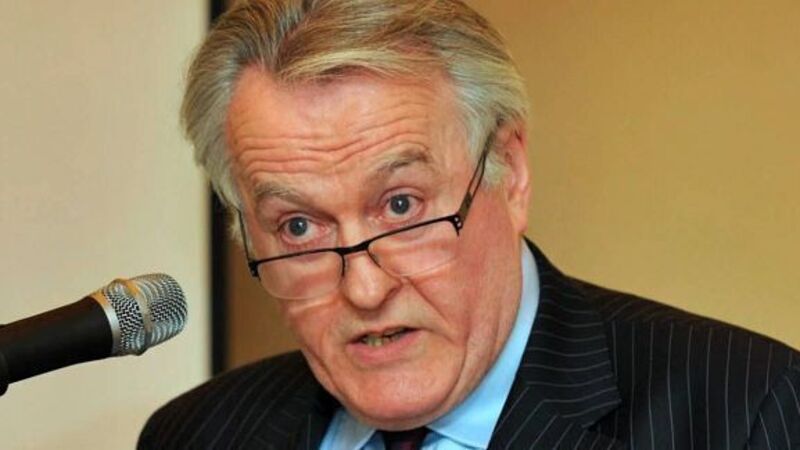Cautious welcome for new bank

The Government has received a good kicking and now it must dust itself off and get back to work.
A healthy dose of job creation is what the doctor must surely order in such circumstances. This can only be really achieved by harnessing the country’s small to medium sized firms.
They must be put in a position to respond to signs of growth at home and abroad, in large part, through the allocation of loan finance in sufficient quantity and on terms that are acceptable.
The Government has produced a raft of measures aimed at remedying what is an extremely challenging situation, such as a credit guarantee scheme for SMEs and a loan fund for micro enterprises. Venture capital funds have been set up to target high growth IT companies, in particular.
But those charged with the task of engineering this revival have come up against two particular problems.
A large proportion of our smaller firms are saddled with debt, much of it property related. Its principals, in many cases, need to have their debt restructured. Without such restructuring, they will be unable to make the investments in plant, equipment, people and new products that they require.
The second problem is one that is all too familiar.
Our banks are delveraging, reducing their loan books. The bankers have been badly burned as a result of the years of reckless lending. They are like rhinos whose horns have been lopped off.
Last week, the Government announced the creation of what has been described as a new SME Bank, the Strategic Banking Corporation of Ireland.
If one did not bother to read behind the headlines, those of a certain vintage might conclude that the Government has decided to revive the old ICC, or Industrial Credit Corporation, which existed until it was offloaded more than a decade ago by then finance minister, Charlie McCreevy.
The ICC was a well respected organisation run for many years by an old style banker, Frank Casey. It provided a good training for a generation of young financial managers.
It backed some interesting projects. It had a sister body, the ACC, or Agricultural Credit Corporation, whose performance was somewhat more mixed.
The new Strategic Bank, SBCI, will be a different beast. It will act as an intermediary between its capital providers, including the German State bank, KfW, the European Investment Bank, and our own Irish Strategic Investment Fund. Its goal will be to provide loans at below prevailing commercial rates to SMEs.
Finance Minister Michael Noonan has indicated that he expects that the SBCI will have a balance sheet of around €5bn after five years.
The pillar banks, in particular, will have a large pool of funds from which to draw. Small firm organisations will be pressing to ensure that these low interest funds reach the intended targets and are not siphoned off elsewhere.
According to Dermot O’Leary of Goodbody Stockbrokers, “the banks will be used as a distribution platform for these cheaper funds and must prove that the funds are solely used to lend to SMEs. The Government hopes that the SBCI (strategic bank) will lower barriers to entry to the market.”
O’Leary puts matters in perspective by pointing out that Noonan’s €4bn must be weighed against the fact that there is €25bn in non-property, non-finance SME (small to medium enterprise) debt currently outstanding.
The Strategic Bank funds should be a pain easer rather than by themselves a game changer. They are part of a broader canvass that is being painted by the policy implementers.
It is worth at this point looking at the key constituents of the Strategic Bank and in particular, at the German bank, KfW.
KfW Bank was formed in 1948 in postwar West Germany then under reconstruction.
The bank owes its existence to the Marshall Plan, a very foresighted plan aimed at funding the rebuilding of Western Europe’s war ravaged economies.
KfW Bank in English is the ‘Reconstruction Credit Institute.’ Its two largest subsidiaries are KfW Forderbank and KfW Mittelsstandbank.
KfW has been rated as the safest bank in Europe in some surveys. Its supervisory board is currently chaired by German Finance Minister Wolfgang Schaeuble.
It is 80% owned by the German Federal Government, with the rest owned by the country’s States, or Lander.
It borrows from the bond markets at rock bottom rates allowing it to lend on funds cheaply.
Availability of lending finance is not enough by itself. There must be a willingness on the part of SMEs to draw down borrowings as well as a will to lend on the part of the financial institutions. According to Davy Stockbrokers analyst Emer Lang “the pillar banks have met their SME lending sanction targets in the past three years, but conversion to drawdowns has been weak.”
According to Ms Lang, “the Irish Strategic Investment Fund is expected to contribute around 30% of the Strategic Bank’s funds, with the balance of the initial €500m in funding coming from the European Investment Bank and KfW. The EIB typically finances between 30% and 50% of a project. It has been active in Ireland over many years.
It will be up to the Irish banks on the ground to assess the proposals from the SMEs and these banks will retain the exposure to the risk.
They will be obliged to ‘demonstrate beyond doubt’ that the lower cost in funding is passed on.
ISME has expressed concern that the banks “will revert to form and divert these loan funds to ‘safer’ large businesses”.
The organisation is recommending that the banks benefiting from this lower cost funding intended for SMEs be required to file monthly returns with the Central Banks, showing the type, duration and interest rate on each loan passed from the new Strategic Bank.
According to ISME’s Mark Fielding, “this initiative could potentially be of great benefit to job and wealth-creating SMEs, but only if the Government ensures that bailed out banks play their part.”
Firms will require not just a cut in the prevailing interest rate, but also the issue of the term of a loan being addressed. Many will be unwilling to risk investing without guarantees as to the length of the term on offer.
Chambers Ireland CEO, Ian Talbot, has welcomed the announcement as a “further vote of confidence in the Irish economy”, but adds that it is vital that “the Government does not lose sight of the crucial issue of short-term funding for SMEs which this issue does not address”.
He has expressed disappointment at Mr Noonan’s “vague timeline”, his expressed ‘hope’ that the new bank will be operational by the year end. Chambers Ireland is calling for a deadline of next September to be set.
Mr Talbot believes, however, that the timing of the initiative is good in that it coincides with the first signs of real recovery in the economy.
“People have been retrenching, cutting costs, waiting for the signs of improvement. Our members have been looking to hang on, not invest. The banks have been reluctant to fill their working capital needs.”
In his view, this initiative is “another piece in the jigsaw” alongside the Loan guarantee scheme, for example. “Each is another reason for someone to get down to the bank to look for money.” The difference now is the existence of those fabled ‘green shoots’ in some sectors such as the motor trade and exports.
“We have slightly cheaper funding on offer along with a vote of confidence from an external investor (KfW).”
Talbot stresses that the Fund is not addressing firms struggling with short term needs for loan finance. Separate measures will be required for firms with solid core businesses who took out large loans for property.
He suggests that equity funds be put aside to address people in this situation, with significant write downs on debt also in the mix.
The challenge for lenders will be to get back offering finance having been “pummelled for previous lending decision.”
Up until recently, just one half of loans sanctioned for SMEs have been drawn down. However, a significant pick up in loan draw down is underway, Ian Talbot confirms.
Firms are investing again. However, some caution against building up too much debt again given the prospect of an eventual rebound in loan rates.
Low rates are welcome, but caution will remain the keyword.















